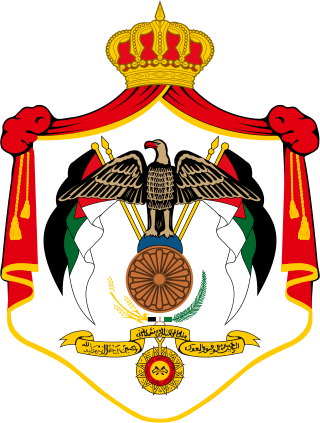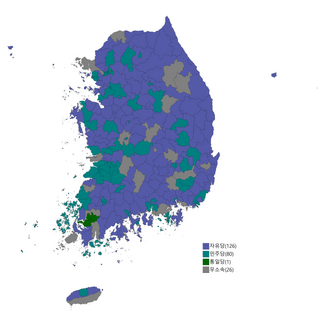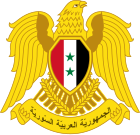
General elections were held in the Kingdom of Denmark on 22 September 1953, the first under the new constitution. The Social Democratic Party remained the largest in the Folketing, with 74 of the 179 seats. Voter turnout was 81% in Denmark proper and 69% in Greenland. The electoral threshold was 60,000 votes.

General elections were held in Malaysia between Saturday, 24 August and Saturday, 14 September 1974. Voting took place in all 154 parliamentary constituencies of Malaysia, each electing one Member of Parliament to the Dewan Rakyat, the dominant house of Parliament. State elections also took place in 360 state constituencies on the same day. The elections were the first and only general elections for Tun Abdul Razak as Prime Minister following his appointment to the position in 1970. They were also the first general elections for Barisan Nasional (BN), a new political alliance replacing the Alliance Party; with the Pan-Malaysian Islamic Party (PAS), Parti Gerakan Rakyat Malaysia (PGRM) and the People's Progressive Party (PPP) joining the parties from the old Alliance.

Constituent Assembly elections were held in the Democratic Republic of Georgia between 14 and 16 February 1919. The electoral system used was party-list proportional representation using the D'Hondt method in a single nationwide district. The result was a victory for the Social Democratic Labour Party of Georgia, which won 81% of the vote, and 109 of the 130 seats. In by-elections held in spring, they lost four seats and the Armenian Party in Georgia–Dashnaktsitiuni and the Georgian National Party both won seats.
Parliamentary elections were held in North Korea on 12 December 1972. Only one candidate was presented in each constituency, all of which were selected by the Workers' Party of Korea, although some ran under the banner of other parties or state organisations to give the illusion of democracy. Voter turnout was reported to be 100%, with 100% voting in favour of the candidates presented.

Parliamentary elections were held in Iran on 15 April 1984, with a second round on 17 May. The majority of seats were won by independents, whilst the Islamic Republican Party was the only party to win seats. Voter turnout was 65.1% in the first round.

General elections were held in Turkey on 12 October 1969. The electoral system used was party-list proportional representation using the D'Hondt method in 66 electoral districts. The result was a victory for the Justice Party, which won 256 of the 450 seats. Voter turnout was 64.3%.

General elections were held in Turkey on 10 October 1965. The result was a victory for the Justice Party, which won 240 of the 450 seats. Voter turnout was 71.3%.
Parliamentary elections were held in Iraq on 17 January 1953 to elect the members of the Chamber of Deputies. The result was a victory for the Constitutional Union Party, which won 67 of the 135 seats. Only 57 seats were contested.

General elections were held in Jordan on 29 August 1951. As political parties were banned at the time, all candidates ran as independents, although some affiliated with the Jordanian Communist Party, the Ba'ath Party the Arab Constitutional Party and the Umma Party all won seats.
General elections were held in Lebanon between 12 July and 9 August 1953, the first under the new electoral system which allowed candidates to win with a plurality of votes, rather than requiring a second round. Independent candidates won the majority of seats. Voter turnout was 50.0%.

General elections were held in Lebanon between 27 August and 3 September 2000 to elect the 128 members of the Parliament of Lebanon. Independent candidates won the majority of seats, although most of them were considered members of various blocs. Voter turnout was 40.5%.

Parliamentary elections were held in Syria on 10 and 11 February 1986. Members were elected using the multiple non-transferable vote in fifteen constituencies, with an average district magnitude of thirteen. The result was a victory for the Arab Socialist Ba'ath Party, which won 130 of the 195 seats.

Parliamentary elections were held in Syria on 22 and 23 May 1990. No political parties were permitted outside the National Progressive Front, though candidates outside this group could run as independents. Approximately 9,000 candidates ran as independents. Members were elected using the multiple non-transferable vote in fifteen districts, with an average district magnitude of 16.6. The result was a victory for the Ba'ath Party, which won 134 of the 250 seats. Voter turnout was 49.6%.

Parliamentary elections were held in Syria on 24 and 25 August 1994. Members were elected using the multiple non-transferable vote in fifteen districts, with an average district magnitude of 16.7. The result was a victory for the Ba'ath Party, which won 135 of the 250 seats. Voter turnout was 61.2%.

General elections were held in Burma between 27 January and 10 February 1974. They were the first elections held under the new constitution, which had been approved in a referendum the previous year. This had made the country a one-party state with the Burma Socialist Programme Party (BSPP) as the sole legal party. The BSPP won all 451 seats in the People's Assembly. Voter turnout was reported to be 94.6%.

Parliamentary elections were held in Mongolia on 19 June 1977. At the time, the country was a one-party state under the rule of the Mongolian People's Revolutionary Party. The MPRP won 328 of the 354 seats, with the remaining 26 seats going to non-party candidates, who had been chosen by the MPRP due to their social status. Voter turnout was reported to be 100%, with only one of the 694,855 registered voters failing to cast a ballot.

Parliamentary elections were held in Mongolia on 21 June 1981. At the time, the country was a one-party state under the rule of the Mongolian People's Revolutionary Party. The MPRP won 344 of the 370 seats, with the remaining 26 seats going to non-party candidates, who had been chosen by the MPRP due to their social status. Voter turnout was reported to be 100%, with only five of the 792,896 registered voters failing to cast a ballot.

Parliamentary elections were held in Mongolia on 22 June 1986. At the time, the country was a one-party state under the rule of the Mongolian People's Revolutionary Party. The MPRP won 346 of the 370 seats, with the remaining 24 seats going to non-party candidates, who had been chosen by the MPRP due to their social status. Voter turnout was reported to be 100%, with only ten of the 929,403 registered voters failing to cast a ballot.

Legislative elections were held in South Korea on Friday 2 May 1958. The result was a victory for the Liberal Party, which won 126 of the 233 seats. Voter turnout was 87.8%.

National Assembly elections were held in areas controlled by North Vietnam on 6 January 1946. Held under the 1946 constitution, they resulted in a victory for the Communist-led Việt Minh, which won 182 of the 302 seats, although the distribution of seats between parties had been decided before the elections. The ballot was not secret and ballot papers were filled out in the presence of aides who were "to help comrades who had difficulty in making out their ballots."














